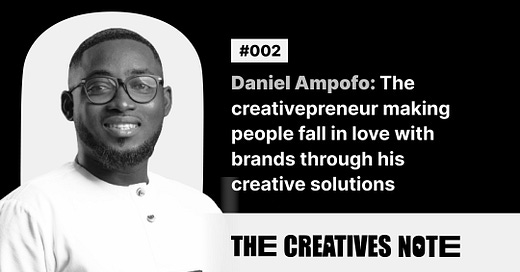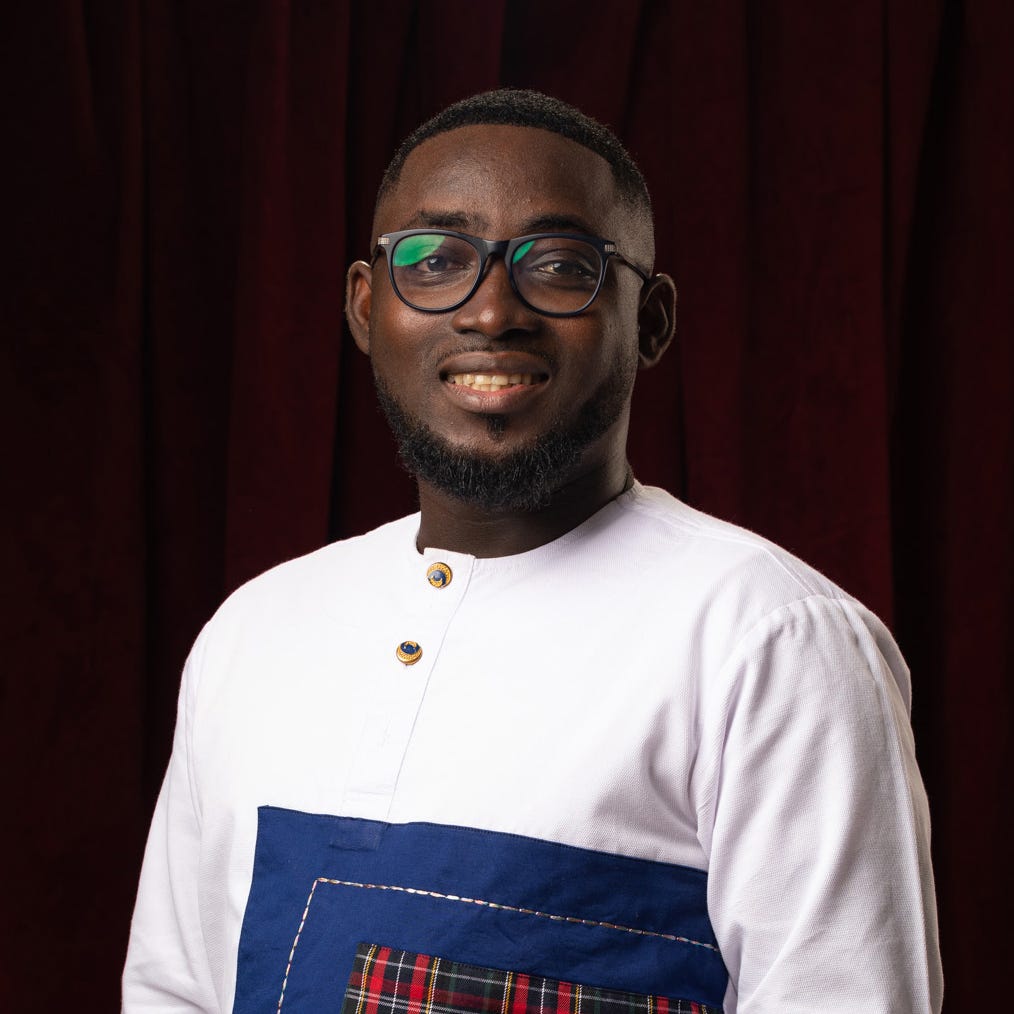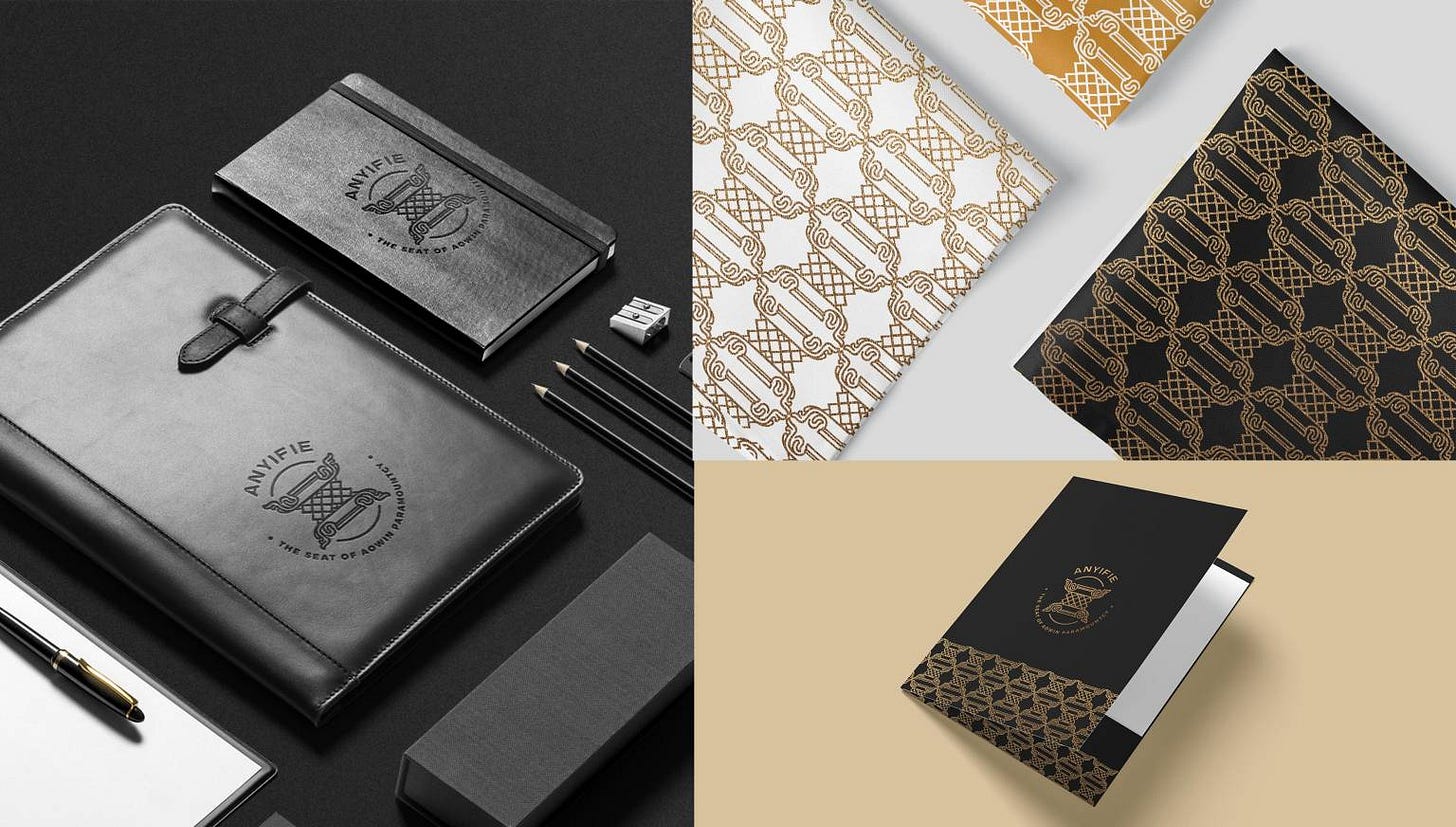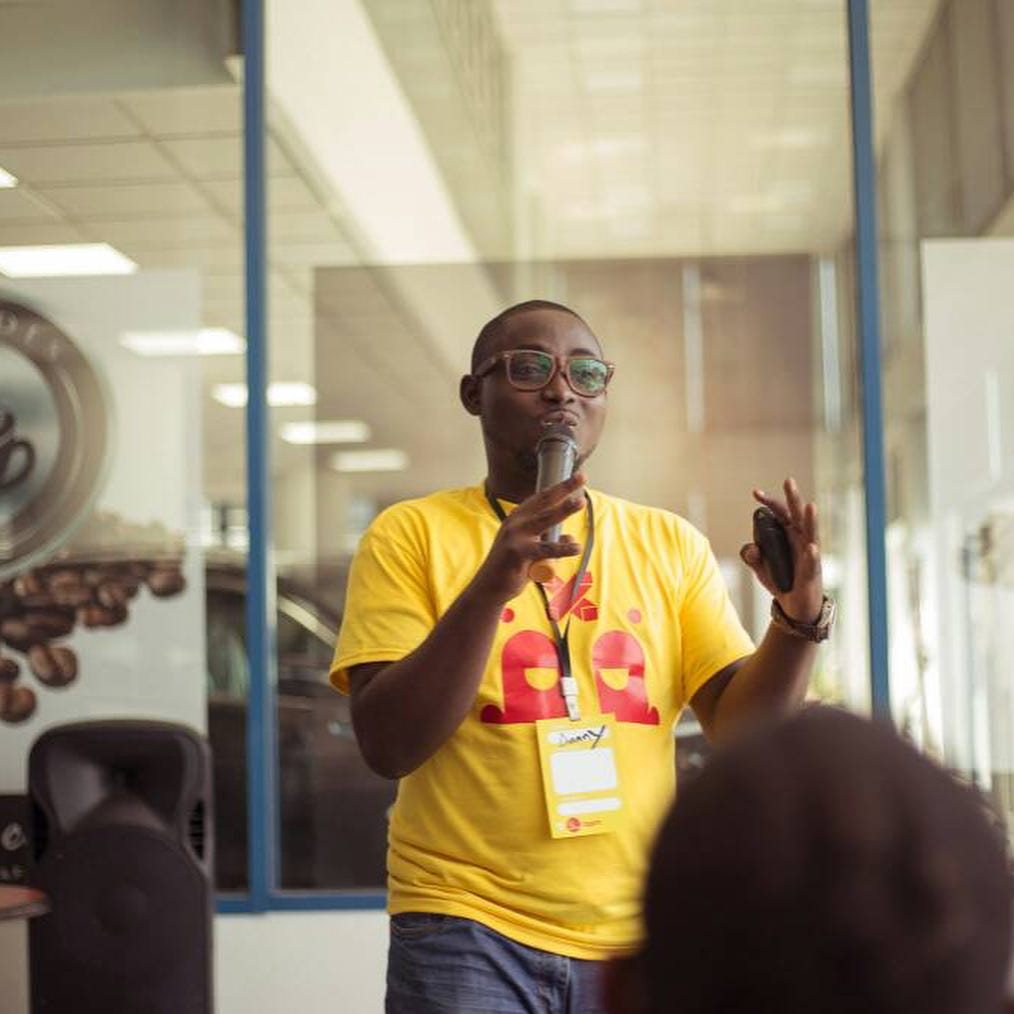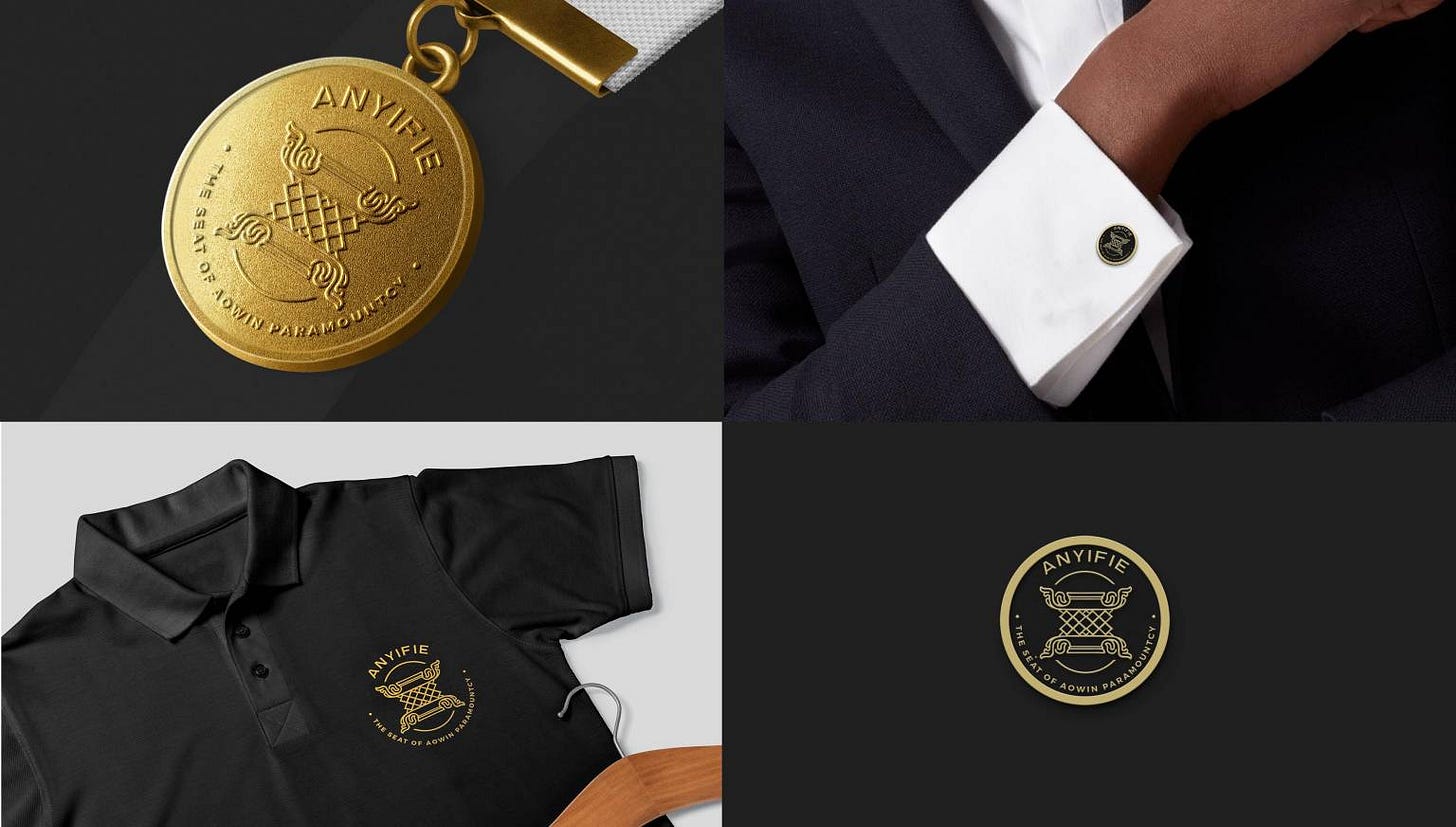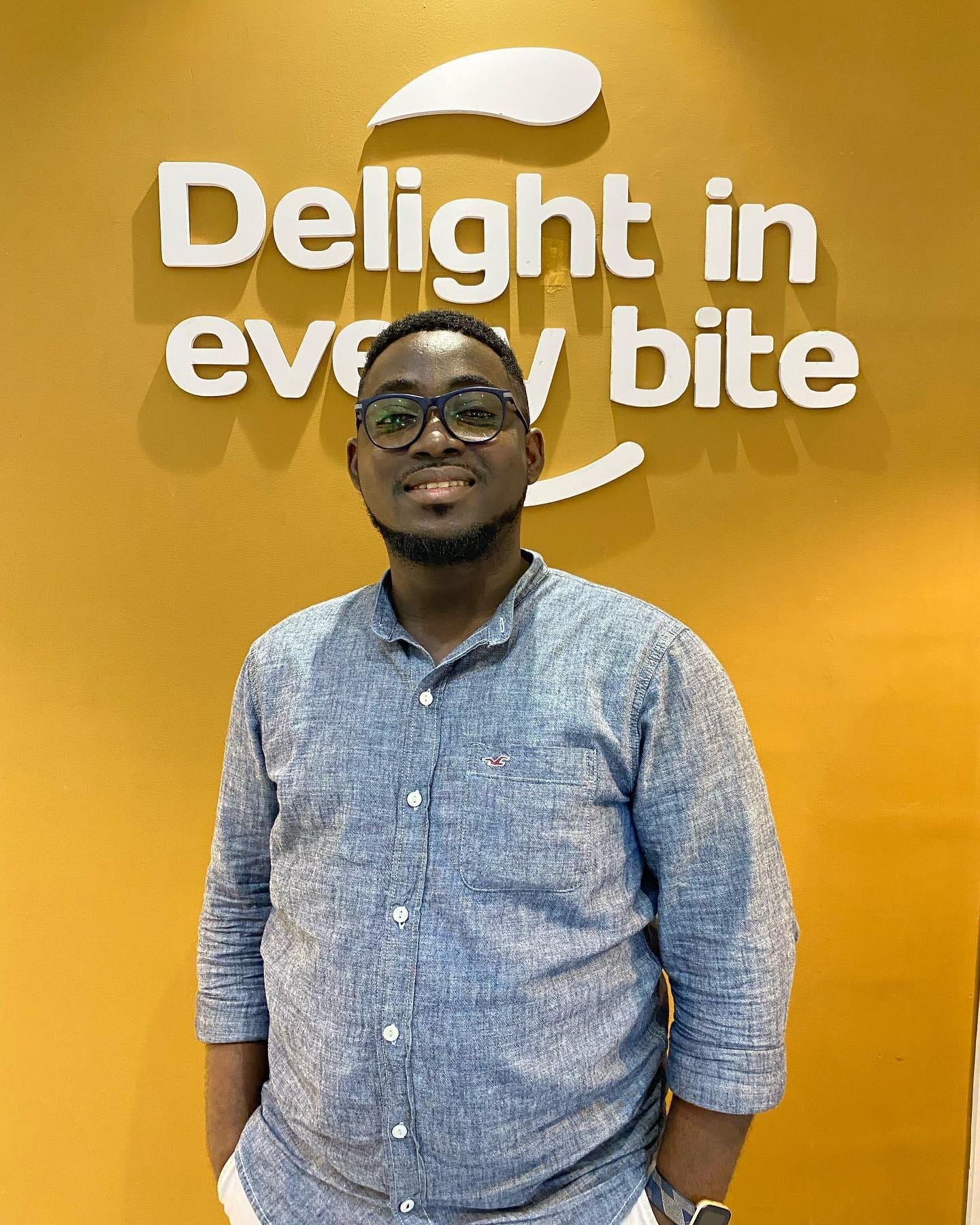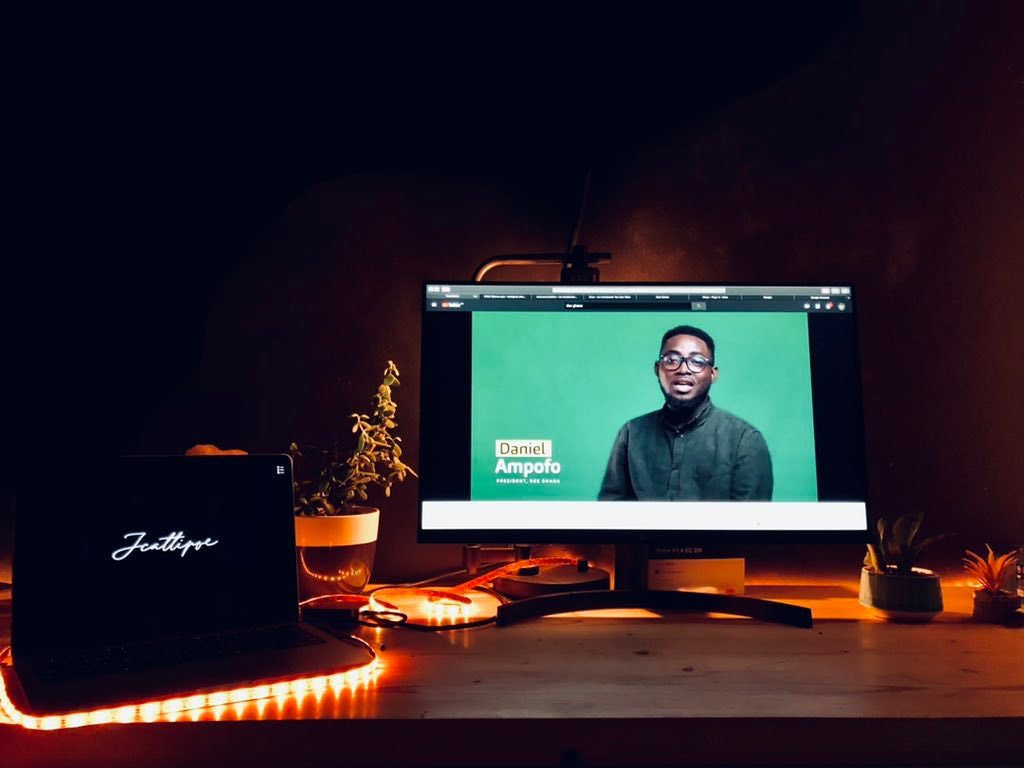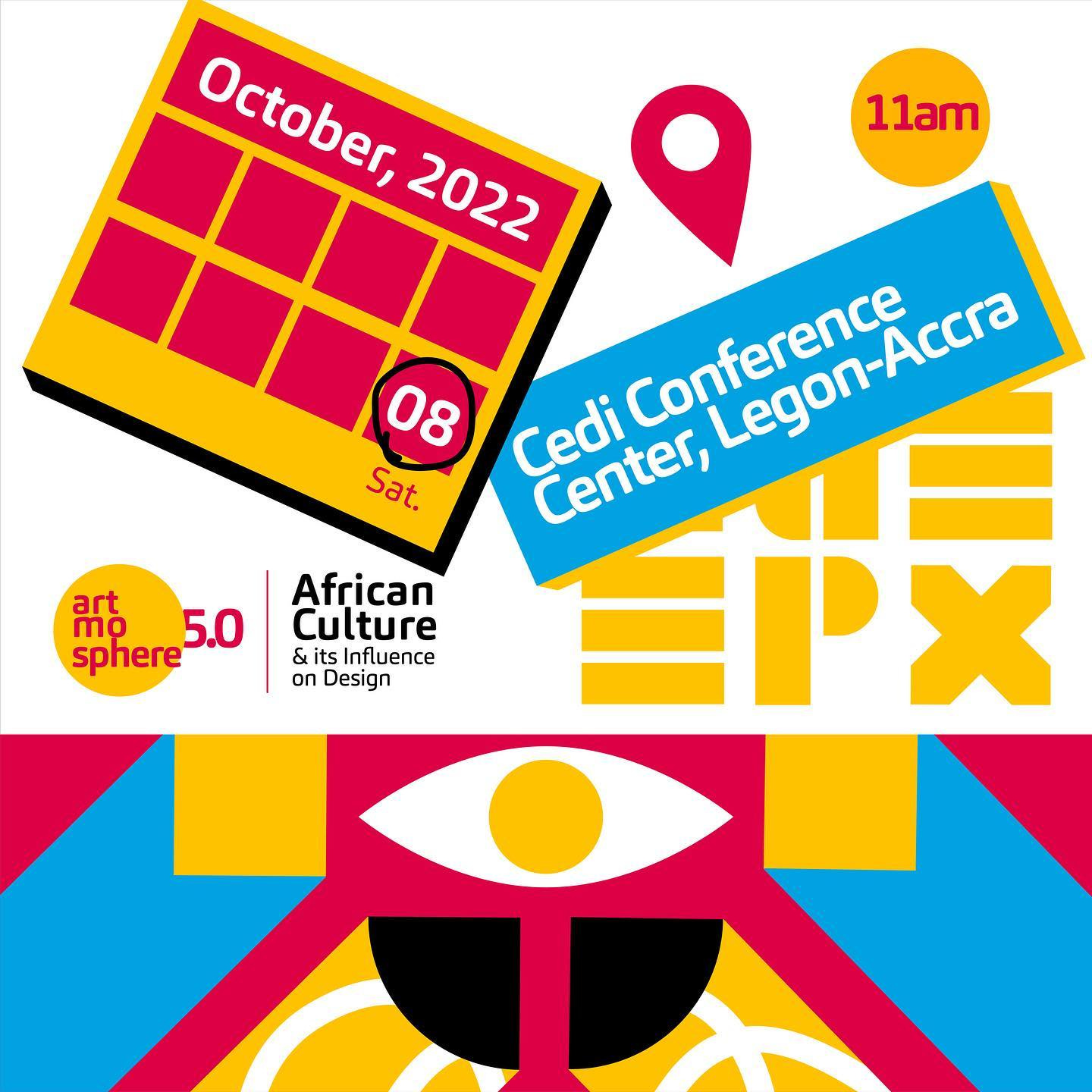Daniel Ampofo: The creativepreneur making people fall in love with brands through his creative solutions — #002
I make people fall in love with brands and help creatives find and grow their value. I am making an impact through dEX Ghana, HACKLAB Foundation and thirdLaw
Hi, thank you for joining us for another edition of our interview with African Creatives. In this edition, I spoke with Daniel Ampofo, a creativepreneur making people fall in love with brands through the creative solutions he offers. He also helps creatives find and grow their value. He shared how he stumbled into graphic design which turned out to be a career path for him.
If you are curious to know what drives the work he does, what it takes to manage and make an impact through three organizations, the challenges he faces and how he navigates them, his favourite projects, how he spends his day, the people that inspire him and the people and brands he would love to work with, you should continue reading. You will definitely love and enjoy reading this!
Tell us about yourself.
My name is Daniel Ampofo. I was born and raised in Ghana. I was born in a mining town called Obuasi, where I had my primary and GHS education before moving on to college for my SHS education. Currently, I call myself a creativepreneur, that is, a creative entrepreneur because I am in a number of spaces. I always say I am making impacts in a number of ways, that is, through tech and design. I am the President of dEX Ghana, a community helping African creatives amplify their value through design experiences, and the organizer of the “Artmosphere Design Conference”. I am also the vice president of HACKLAB Foundation which is tech-focused. I also run a brand and product design agency that started about a year called thirdLaw.
I actually studied science in SHS but I have always been interested in how things look, I have been a very visual person. So, even though I studied science, I've always been interested in design. I started real practice after SHS. I spent a year teaching and which was where my design journey started.
How did your journey into design start? What led you to design?
Right after SHS, I was teaching mathematics in a school where I met a guy who was also a teacher at the school. He had a laptop which had CorelDraw installed on it. One day, I was playing around with CorelDraw on his Laptop and started creating designs during a free period. When he came back, he asked me if I was a designer because of the design he saw me create and I said, No, to which he replied “You will make a great graphic designer”. When I got home that day, I Google searched “How to become a graphic designer”. I got to know about software by Adobe like Photoshop, Illustrator and others. So, I downloaded Adobe and started watching YouTube videos until I went to university. I explored really well when I got into the university and learnt a lot from other people before starting my first design business. When it comes to design, I belong to the University of YouTube students.
How would you describe what you do to a 5-year-old?
I would say I bring people’s imagination to life through colours and shapes. I use colours and shapes to communicate with people.
What is your day-to-day routine? What does a typical day look like for you?
The main thing I do for money is thirdLaw, that is, my brand and product design company but as a self-taught designer like myself I know it is not easy. So, that was why we decided to create dEX Ghana to help other designers.
Typically, I spend the early hours of my day aligning my tasks properly so that I know the things I need to get done for the day/week. I use my calendar to set up reminders for the requests from clients to know which one I need to deliver first and set my priorities for thirdLaw. After this, I check out dEX Ghana to look at my tasks for the day too. Work at dEX Ghana is usually relaxed until the time of the year when we plan and host our event. I do the same thing for HACKLAB as well. Then I check my social media to see what is happening in the design ecosystem in Ghana and lend a voice when necessary. Mostly, I spend my time sitting behind my PC attending to one task after the other.
What do you enjoy most about what you do? What is the most satisfying thing about your job?
Creating a design work is a lot of satisfaction for me. Basically, creating someone's imagination, that is, visualizing and bringing their imagination to life.
What is the best career investment you have made as a creative?
I would say the Internet, that is, Data. This is because I spend a lot of time doing research and learning different things online. For me, I search almost anything I want to learn how to do online. I have done different types of design, photography, and even dabbled in video before deciding to settle on creative direction and brand identity
I would say people too. I can't understate the power of one’s network because it has helped me a lot. I was part of a WhatsApp group when I started learning where we were about 12 designers of different backgrounds and levels. This group was very useful for me to grow.
Related Interview
What are the challenges you face in your day-to-day activities?
The first thing is localized education, that is, finding documents and tutorials you can relate to as an African. Finding people to look up to too is another. The senior (veteran) designers here are too reserved. Everyone is in their corner doing their thing alone. In my early days of learning, there were very few people to look up to.
Another challenge designers face generally is people’s understanding of design in Africa and Ghana. People not placing great value on design which is not even unique to individuals, you can tell by how government bodies and entities put out designs. The value placed on design is very low which goes a long way to affect how designers handle projects, work and engage clients.
How do you usually address this challenge of design appreciation?
I always tell designers that the client does not have the same understanding of design as you so I believe that the client should leave more educated about design after the project is done. I always try to take them along the design education route and take my time to explain why things are the way they are, why they cost how much they do and the reason they have to pay attention to certain things. In the end, they love it. Most of them don’t understand because they don’t know. After this, they get to appreciate the work that goes into the project and get to value and appreciate the work designers do.
What is your creative process?
For most projects I work on, my creative process has already begun like 3 or 4 weeks before the project itself even begins because there are days I spend the entire day just mood-boarding and inspiring myself. This makes it easier when a project comes up. At the beginning of the project, I have a discovery session with the client to get the brief of the project. Before now, I used to use questionnaires but I have found out that people don’t really like filling out forms and writing things in detail, so I have a conversation with them to look at the target audience, what they are trying to achieve, and where they are coming from which sets the visual direction of the project. After this, I go back to see some of the ideas I have curated and check the mood boards I put together weeks back. Once I get a good grasp of this phase and understand the project, I get to work and get feedback from the client until we finish the project.
What part of this process do you enjoy the most?
The part where I get to see the final result that is produced as a result of the work that has been done.
What are the essential gadgets, tools and software you use for work daily?
I like to keep things simple. I use the reminder app on my phone to schedule things I need to do. I use the sticky note on my MacBook or the note app on my phone to jot things down. I use Adobe Creative Cloud and Figma depending on the nature of the project and the internet.
For gadgets, I use my laptop when I am outdoors and connect with one external monitor when I am indoors.
How did the Covid-19 pandemic and lockdown impact you and the work you do as a creative?
While a lot of people lost their jobs, it was the other way for me. I actually got a lot of projects for me and my agency during that time. It was the best time we had as a business because a lot of people wanted to take their business online. We did a lot of website design, branding, and social media management projects. It was a busy time for me. Also, working at home was interesting for me.
How do you handle creative blocks and rejections as a creative?
On the client’s rejection part, I always believe that the client loves their project more than you do as a creative and you are there to express what they have in mind. I see myself as a consultant, and I am there to consult. I believe I can only advise, it's up to the client to choose to accept my recommendations and advice. This approach saves one a lot of time, energy and heart pains because you know you have delivered what you have to do and it is left for the client to accept it or not. So, when I design something and the client doesn’t like it, we just take two steps backwards and try to understand why they don’t like it and understand the problem.
I always tell my clients that if they don’t like the first set of options I give them and they also don’t like the second set of options, I will refund them and so far in my career, only one client didn’t like the solutions I proffered. When I wanted to refund her, she told me to keep the money because she knew that I had really put in the work but would want to try someone else and I didn’t hold any grudge against her. This same client came back a year or two later and we worked on another project together. I don’t take client rejections personally.
When it comes to creative blocks, personally, I have never really believed in creative blocks because I think that even though design has an element of art, it is also technical and procedural. This may be attributed to my science background because I studied Physics and Computing at the University. I believe there are steps to achieving certain results. I believe there should be a step-by-step procedure for creation. As a creative, I believe you should be able to define a routine that works for you. Creative blocks happen mostly when a creative wings it. A creative needs to develop a system that works for them. Most creatives don’t make time to rest and engage in other activities because they are always behind their computer working. They don’t go out to network, connect, meet new people, play games and exercise. These activities help to free up your mind, give you more ideas and inspire creativity. Once this system is in place, there is a high probability of not having a creative block as a designer.
What is the task you don't enjoy doing but you have to do?
That would be sketching. I don’t really like sketching and mostly jump to sketching on my computer instead of using pen and paper.
What are your top 2 favourite projects you have worked on?
The first one is a project we did for Perbi Cubs during the pandemic. They are a physical library service that went online because of the pandemic and we helped them go digital.
Another one is a very historic one for me because it’s about a kingdom and a chief in Ghana. That was the work we did for Anyifie.
How do you stay creative and motivated to keep creating?
I find inspiration, joy, and delight in what other creatives do. This keeps me motivated to keep working.
What do you do for fun? How do you relax?
I play a lot of video games which surprises people a lot of the time. I like going out to events and meeting people too. I also enjoy travelling too but I have not been able to do a lot of that recently.
Who are the creatives that inspire you?
I am inspired by Michael Beirut and Debbie Millman.
Most of the guys that I learned with together and are now a part of dEX Ghana also inspire me. Eddy, Ben, Joshua, and the guys in the Ghana creative ecosystem.
I also love the guys at Da Design Studio FourthCanvas, Palette GH, and Cave Lantern.
What brands would you love to work with?
Most definitely Google and Apple. I like how they do their stuff. It used to be just Google before and I always tell my friends that Google is the only company that I will accept their offering without thinking twice. Apple is now on the list, I like the level of attention Apple pays to their visuals.
Read also
Who are the people you would love to work with or collaborate with?
I would love to collaborate with Osmond Tshuma.
I would also love to collaborate with the team at Pentagram, Da Design Studio, and FourthCanvas.
What would you be doing if you were not a Creative?
I would probably be a developer. I like computers and also like building stuff.
What advice do you have for someone who is at the early stage of their creative journey?
I would say, Explore!!! I have gotten to where I am because of exploration. I have spent so much time exploring and trying out different things. I have done book cover design, brand identity design, event branding, UI/UX design, product, wedding and corporate photography and videography. The more you explore, the better you get at figuring out what you want to specialize in. Don’t let anyone force you into niching out at the beginning. Explore until you find something you want to specialize in
Whose story would you love to read about?
I would like to read Tunji Ogunoye’s story.
Thank you for sharing with us!!!
Connect with Daniel on Twitter and Instagram. You should also check out and register for Artmosphere 5.0 happening on the 8th of October 2022.
Thank you for reading and don’t forget to like and share the interview.
You should also consider subscribing too
Special thanks to Lizzle for assisting with transcribing the audio.
See you next time!!!
Follow us on Twitter, Instagram, and LinkedIn to stay up to date.


